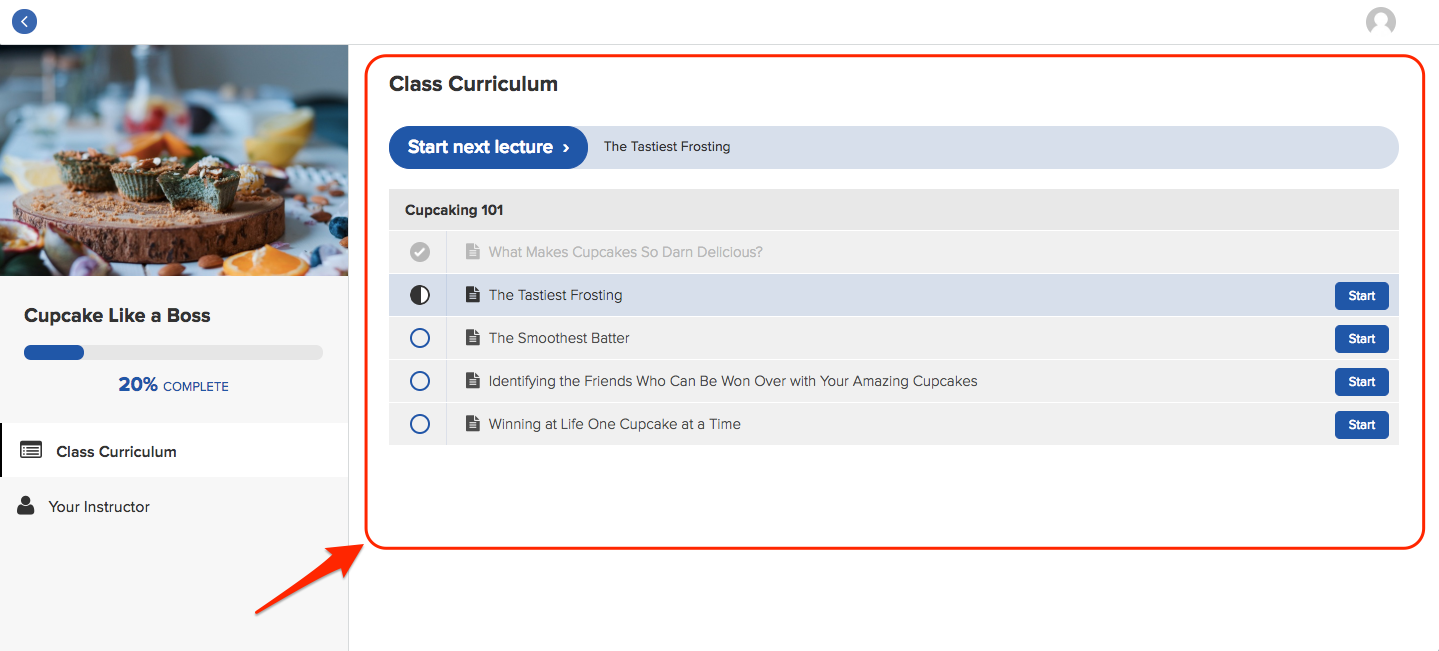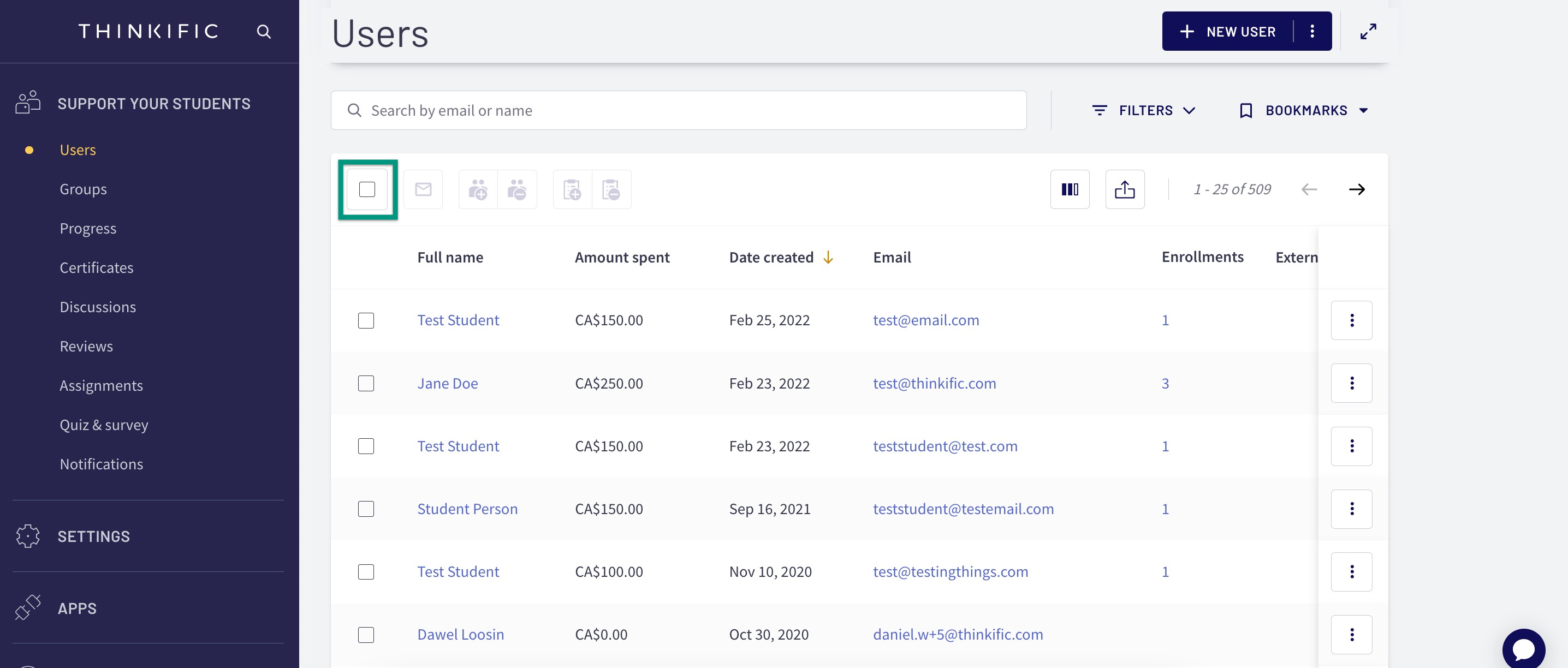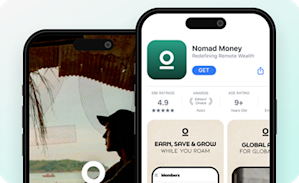Online Courses
Thinkific vs. Teachable – The Ultimate Comparison for 2025
We’ll compare Teachable and Thinkific and help you decide where to launch your course business.
Author
Last Updated
February 6, 2025

Table of Contents
Building an online course is a great way to share what you know with the world and earn income. And the course platform you choose to build on matters; this choice can define what you can teach, how you can teach it, and who you can teach it to.
Thinkific and Teachable are both popular online course platforms. They have similar functions and similar weaknesses. But how can you tell which is right for you?
This article will cover:
What each offers for customizing and delivering online learning.
The monetization and business features of each.
If and how these platforms let you build engagement.
How they deliver apps and give students access.
Want to try the platform with the most $1 million course communities?
Thinkific vs. Teachable: Overview
Thinkific | Teachable | |
|---|---|---|
AI-Quiz Creation | ||
Landing Pages | ||
AI Writing Tools | ||
Native Live Courses | - | - |
Course Outline Generator | ||
Native Livestreaming | - | - |
Native Live Classes | - | - |
Events | - | |
Communities | Basic | Basic |
Built-in Email | ||
Marketing Funnels | ||
Apps Included? | iOS & Android (low-rated) | iOS only |
Branded Apps | Additional Cost | - |
Pricing | From $36/mo | $39/mo + 5% transaction |
What is an online course platform?
An online course platform is software that provides you with a robust set of tools to build and deploy online courses. There’s no need for coding, the learning platform has done the development for you and you just need to focus on creating an awesome online course.
Creators choose an online course platform because it allows them to focus on what matters: their members and their content.
Here are the things you can do on a modern course platform. See which of these you need, and consider this list as you judge between Thinkific, Teachable, or another option:
Building pre-recorded courses with any kind of content and evaluation.
Building course websites and/or landing pages.
Teaching live courses with HD livestreaming, chats, and backstage.
Community and memberships built-in for boosting student engagement.
Member management tools for both back-end and member-facing applications.
Branding to make your course look your own (inc. branded apps, if applicable).
Thinkific vs. Teachable
Customization and features
Let's talk customization and course features for content monetization. Here's how Thinkific vs. Teachable compare.
Thinkific
Thinkific comes pre-loaded with a drag-and-drop course builder, some nifty marketing functions, multiple currency sales, and an affiliate program.
Courses can have audio, video, PDF, and downloads, and you can add quizzes. It even has a cool generative AI feature to create quiz questions. You can add certificates, and integrate externally-hosted content or use a variety of third-party integrations.

On top of that, you can deliver both dripped courses (where you release material for your course as you create it) as well as full content drops all at once.
Thinkific and Teachable offer a lot of the same features. But here are some of the strongest points for Thinkific:
Solid LMS with different options to deliver content, coaching, and courses--primarily in an asynchronous format. It's also technically SCORM compliant.
Easy and intuitive drag-and-drop course builder.
Integrated quiz tools, feedback surveys, and more evaluation options than Teachable.
An "app store" with over 80 useful integrations.
More course website options than Teachable with themes, multi-pages, and custom domains. Lots of options for branding control.
Weaknesses
No native livestreaming--you need Zoom or YouTube integration for live or blended learning
Limited analytics
Teachable
Teachable is an online course platform that focuses on customization and ease of use. Like Thinkific, it has a drag-and-drop course builder, dripped content, and course creation with any combination of video, text, audio, and live experiences. Its video player has note-taking and picture-in-picture. Courses can be built with exams and assessments, plus comments on each lesson and certificates upon completion.

Teachable was an early online course platform. As a result, it offers a lot for asynchronous courses (prerecorded courses), but the platform hasn't evolved much.
With Teachable, you can:
Create and edit courses and lessons with "power editor" software for video, different pre-recorded experiences like coaching sessions, and dripping content.
Drag-and-drop course pages to get the look you want with unlimited access to video bandwidth, students, and the number of courses you can offer.
Use quizzes and create certificates.

The “power editor” tool allows you to create multimedia content from live coaching sessions to lectures, on top of offering third-party surveys for members to interact with. And Teachable is adding smart AI tools too, that can generate quizzes, curriculum, lesson content, and summaries.
Like Thinkific, it comes with an affiliate program.
Weaknesses
Only pre-recorded content
Best customization options require Business Plan

Which is best?
Our pick for course experience: Thinkific
Judging by the features and customization of the course platform, Thinkific is probably the better option. It has slightly more in terms of course delivery tools, more options for landing pages and integrated websites.
But, unfortunately, both platforms are missing real options for cohort courses (AKA live courses). We've seen the creator economy take a real shift towards live teaching, and neither have really developed their live tools. Of the two, Thinkific at least gives you a simpler Zoom integration that can be used for live teaching, even if it's not native livestreaming.

Monetization & business operations
Chances are, you're looking for more than just a LMS. You want to start an online course business. You probably want to be able to add a price to an online course and earn income.
Here's what each of these two offers for a robust course business:
Thinkific
Here are some of the main features of Thinkific as course business software:
Integrated e-commerce business tools like sales, coupons, an affiliate program, and basic email marketing. Support for over 100 currencies.
Sell memberships for repeat business or bundles or one-time access--Thinkific will automatically collect relevant taxes.
Add coupons and discounts--including for reengagement--and create special offers, gifts, or group orders.
Appoint unlimited admin to help scale your online business.
You get basic AI prompts for email marketing.
Basic in-course analytic information to see how your members are doing, and you can integrate with Google Analytics.
Weaknesses
Thinkific has basic marketing built-in. It checks boxes, but none of its integrated course marketing funnels, pages, etc. are really powerful or versatile.
You're not able to charge in multiple currencies at a time. You can set your home currency, but if you’re selling in markets around the world you still need to use a fixed currency (ie. USD).
Limited native analytics.
Thinkific's built-in email software is really basic--almost unusable for any serious marketing.
Many of the best features are upsells--not included with the base plan.

Teachable
Teachable's core approach is similar to Thinkific's. It also includes drag and drop page builders with some themes included and the option to style with HTML/CSS. And, like Thinkific, it has some marketing tools built-in: landing pages to collect leads and an email platform that offers some segmentation and filtering options.
Here are some of the tools Teachable gives you to run your course business.
Sell different subscription models including bundles and memberships.
Teachable will automatically collect the taxes on your purchase based on the student’s location.
Good business tools for selling courses, upsells and downsells, and building an affiliate program. Use features like upsells, referrals, cart recovery, and tracking pixels.
Really good native analytics on course completions, engagements, and quiz scoring, as well as business analytics.
Weaknesses:
Online reviews frequently point to a lack of support, poor customer service, and unresolved issues.
Live chat support only with Pro & Business plans
The email feature is better than Thinkific's, but still pretty basic.
$39/mo + 5% transaction fees make Teachable a costly choice here. The more you sell, the more you pay.
Which is best?
Our pick: Thinkific
There's a split here:
Thinkific is less customizable, but easier to use and more reliable as a platform. It works well enough for most users. And--importantly--most users are happy with its customer service and support.
Teachable has more customization and a better email integration. However, its pricing is transaction-fee based, which gets costly. Even worse, its reviews point to terrible customer service and frustrated users.
Thinkific is the better choice for transparent pricing and a clean, reliable software for running a course business.
Communities & engagement tools
Lack of engagement becomes a pain point for course creators, as asynchronous courses suffer from high drop-off rates and discouraged students.
If only a handful of your students finish, have you succeeded as a course creator?
The answer is to build engagement into the course. Think about things like:
Livestreaming
Course discussions
Course events
Adding some of these features can increase revenue (through membership fees), and you can experience the value of the network effect, which helps keep your members motivated and accountable.
Here’s how these two options rank for their engagement features:
Thinkific

When it comes to engagement features, Thinkific has been genuinely working to add in options.
Here's what this looks like:
An online community feature that’s basically a forum with mentions, trending, discussions, and notifications. You can divide content into themes and topics, and organize with Spaces.
The community can be added to an existing course, and members can post, like, and comment on others’ posts.
You can organize conversations, and members can subscribe or unsubscribe to topics that interest them.
The community lives in Thinkific, which is great – there’s no need to add a third-party app.
Weaknesses
Thinkific’s community engine is really basic… It doesn't compete with a modern community platform.
Reviewers report issues with notifications as well as limits to member management and access controls.
It’s just a question and response forum that doesn’t even have the power of a Facebook group.
It's missing key features like native livestreaming, live events, etc. (Some can be accomplished with the Zoom integration.)
Teachable
Teachable also recently added a basic community platform to its offering. (It previously relied on Circle to run communities--but the two platforms are working independently now). A Teachable community can be bundled with a course and offers clean, simple forum-like conversations.
Weaknesses
Very basic community engine.
Which is best?
It's great that both Thinkific and Teachable have been working to improve the community functions of their platforms. But neither is a serious contender for running paid memberships or community-first businesses. And the absence of livestreaming on both platforms is another knock.
These are platforms that are designed for static, asynchronous courses. And they are still playing catch-up to add the engagement features of a membership platform.
Apps & access
Many people want to interact with content and communities on the go. Whether it’s on their phone, tablet, or computer, having your course available in many places is incredibly valuable.
Thinkific

Thinkific was missing mobile apps for a long time. But they launched them last year. However, the apps have been plagued by glitches and complaints (1.9 stars on the App Store & 3.2 stars on the Google Play Store at the time of writing). These are some of the lowest app ratings we've seen of any major course platform.
Thinkific has also recently added a feature where they will develop your course into a branded app. However, with such low ratings on their public apps, it's not clear that it would be wise to trust Thinkific with a branded app.
Teachable
Teachable is a totally different case when it comes to apps. However, it also has its own problems.
Teachable has an iOS app. It's well-rated and easy to use. So far so good.
But Teachable DOES NOT HAVE AN ANDROID APP! Moreover, Teachable customers have been asking for years to add an Android app to the product roadmap. For whatever reason, Teachable does not seem interested in developing an Android app. This prevents 70% of mobile users from accessing your course.
Which is best?
Both platforms have serious flaws in their offerings here. It's not fair to rate either as a winner. You can either choose Teachable and get a good iOS app and no Android app. Or you can choose Thinkific and get terribly-rated apps for both devices.
Thinkific vs. Teachable: Which is the winner?
So is Thinkific better than Teachable? The two platforms offer you very similar experiences for building online courses.
If you’re only comparing Thinkific vs. Teachable then it will largely depend on what you’re hoping to accomplish with online courses.
Thinkific is probably best for course creators that want maximum design customization and some engagement features. Teachable is probably best for those who want a “create it and leave it” course with a slightly better built-in email.
But for some of the other things we talked about above, both platforms are missing key features.
Want a better option?
So what if you could get a robust, immersive course experience and pair it with the community option that G2 ranked best in the business?
And what if that course came with a beautiful app built-in, no matter what device you have?
Mighty Networks is the answer. It's trusted by Tony Robbins, Gary Vaynerchuck, Marie Forleo, Mel Robbins, Jim Kwik, and Matthew Hussey.

More ways to teach

Mighty gives you all the features of a traditional LMS. You can create a course with any type of content with a Table of Contents. But Mighty also gives you:
Flexible Spaces that can integrate courses with Discussions, Chat, Livestreams, Events, Member Profiles, Featured Content, and more.
Integrated and native HD livestreaming for up to 50,000 attendees + high-velocity chat and backstage area. It's perfect for cohort courses.
All this on a platform that makes community a focus, not an afterthought.
Mighty combines everything you need for live teaching and asynchronous learning--easily stepping between the two with a world-class modern community platform.

Designed for engagement
Last year, we realized that our data could predict with a 93% accuracy if a community would succeed. The answer?
Success was directly tied to how often members connected or collaborated with each other.
From this, we've built Mighty into the only software designed to connect members to each other.
The result makes people magic. And here's how it gives you the edge over both Thinkific and Teachable.
People explorer with rich member profiles, AI profile help, "Show Similarities" tool for finding friends, and instant conversation starters.
Customizable new member experience, gamification with Leaderboards, Habit Trackers, and Challenges.
Boost engagement with the Infinite Question Generator--which generates and auto-posts approved conversation starters.
Automations you can customize to unlock rewards like secret courses, challenges, or 1:1 calls.
Use the "make-it-better" text editor to improve posts, generate course outlines, and suggest hashtags.
Re-engaged lapsed members with 1-click.

More brand power
Build a course that reflects your brand, with auto landing pages, light & dark modes, and lots of customization tools.
You can even opt for a branded app: that's your course on your app in the App Store or Google Play Store. Unlike Thinkific and Teachable, Mighty's apps are well-rated and available for every device.

Learn more about getting your own branded course app here!
On top of all those features, your Mighty Network is available across the web, iOS, and Android which gives your members flexibility for how they interact with each other and your content.
Try it out for yourself. It’s free to try for 14 days, no credit card required.
Ready to start building your community?
Start a free 14-day trial to explore Mighty—no credit card required.
More like this
Join Mighty Community
Learn the principles of Community Design™ (and see them in action) alongside thousands of creators and entrepreneurs. It's free to join!

Online Courses
Creating a Course
Teaching a Course
Course Platforms
Selling a Course
Communities & Memberships
Community Platforms
Managing a Community
Building a Community
Growing a Community
Monetizing a Community
Content Creation
Creators & Entrepreneurs
Monetization
Content Creation
Starting a Business
Website Builders
Creating & Managing a Website
Events
Event Platforms
Hosting & Marketing Events
Branded Apps
Creating a Mobile App
Coaching Apps
Community Apps
Coaching
Mastermind Groups
Starting a Coaching Business
Coaching Platforms
Filter by Category
Online Courses
Communities & Memberships
Creators & Entrepreneurs
Events
Branded Apps
Coaching
Build a $1 Million Community
This free masterclass went viral—sign up to learn why.

























